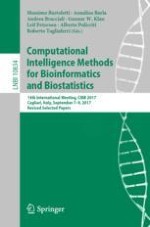2019 | Buch
Computational Intelligence Methods for Bioinformatics and Biostatistics
14th International Meeting, CIBB 2017, Cagliari, Italy, September 7-9, 2017, Revised Selected Papers
herausgegeben von: Massimo Bartoletti, Dr. Annalisa Barla, Andrea Bracciali, Gunnar W. Klau, Leif Peterson, Alberto Policriti, Roberto Tagliaferri
Verlag: Springer International Publishing
Buchreihe : Lecture Notes in Computer Science
